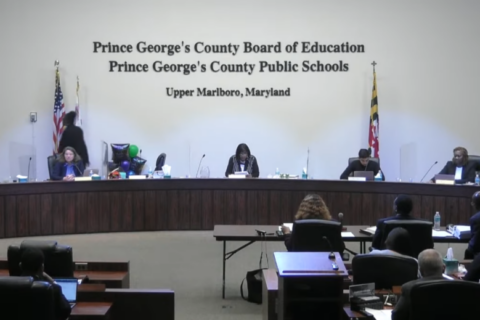The issue of sprawling development was one of the factors that helped reshape the Prince George’s County Council into a body that’s been less amenable to the building industry in recent years. But at the same time, there’s a regionwide demand for more housing.
The Maryland county’s council heard some ideas Thursday about how it could incentivize and encourage a development boom in the areas it’s long claimed to want to see it — near the Metro stations inside the Capital Beltway.
“What we want to do is to be able to direct development to where our county’s comprehensive plan has really envisioned it, which is around our transit districts, which are really the metro stations around the county,” said Tony Felts, the chief of community planning in the Prince George’s County Planning Department.
For years the county has been falling well short of the goals put forth in its long term planning guide. His suggestions ran from noticeable, physical changes to bureaucratic overhauls that might not be so noticeable.
“We’re looking at carrots to get them to get away from the traditional model, which is auto-oriented, car-oriented development out in different areas of the county where you don’t have the infrastructure in place,” he said.
Those “carrots” could include a re-evaluation of the fees developers pay for every housing unit they build, as well as a streamlined permitting and approval process. And he suggested one option the council is already looking at — raising the number of units that could be built on certain parcels of land in these target areas.
“They’re able to get more units, which is more profit for them, and it makes it more attractive for them to put the money in up front to develop these types of mixed use projects,” Felts said. “Whereas these lower caps, it may not be as profitable for them to develop.”
While most of the briefing focused on the residential aspect, Felts explained that’s what in turn leads to more commercial businesses, which is what Council member Krystal Oriadha asked him about.
“With those residents comes more money, more disposable income, and that’s attractive to businesses,” said Felts.
But Councilman Tom Dernoga, who has been one of the council’s leading advocates for pushing more development back inside the Beltway, said he’s been hearing about the need for more “heads in beds” for a long time.
“Even though we have almost a million heads, we don’t have the right heads,” he said. “When you read between the lines, that’s really what’s going on. The development community keeps demanding more and more density everywhere in the county but no matter what density you bring they can’t bring quality retail.”
Felts acknowledged that attractive public spaces and a level of safety also plays a role in that decision making. He said requiring the sort of outdoor and community spaces envisioned along parts of the Blue Line corridor will make developments more attractive for residents who want to be there, and juicing demand for developers to boost the supply of housing.
Designing, or in some cases redesigning roads to be more pedestrian-friendly, with wider sidewalks and narrower roads that slow down traffic, can also help spur the kind of growth the council is looking for, he said.
Next month, Felts will be briefing the council on things that could discourage development outside the Beltway in places such as Bowie and Brandywine, where residents increasingly complain about sprawling developments that overwhelm the roads.
The council is currently looking at a comprehensive piece of zoning legislation aimed at overhauling where the county experiences future growth.
Editor’s note: An earlier version of this story misspelled Tony Felts’ last name. The story has been updated.
Get breaking news and daily headlines delivered to your email inbox by signing up here.
© 2024 WTOP. All Rights Reserved. This website is not intended for users located within the European Economic Area.








